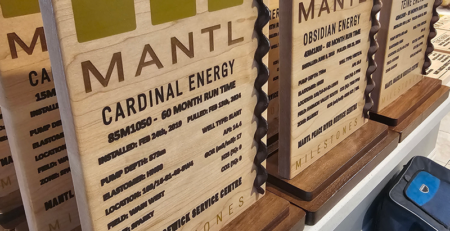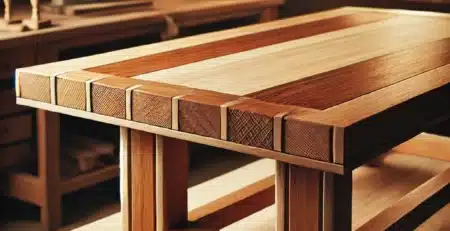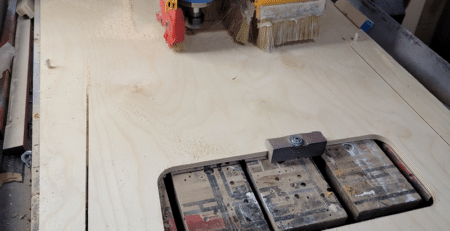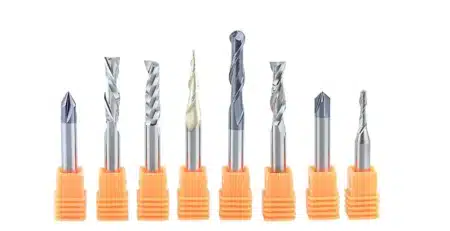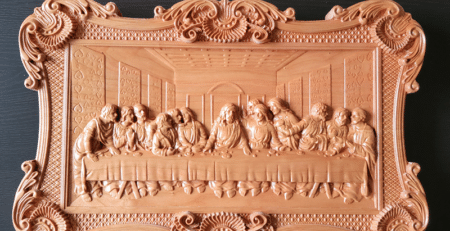Basic Types of Sandpaper
Do you know the types of sandpaper available? Sanding is a pivotal part of finishing woodworking projects. During finishing, you have the option of using sandpaper with power tools or sanding with your hands.
Power-sanding tools make sure that the material is removed quickly and conveniently. Thus, few blemishes are left behind, and you get well-leveled wood. Power sanding is also a reliable option if you want to prepare metal surfaces for painting. You can find sandpaper in the form of belts, sheets, and discs, and you need to select the type suitable for your power tool.
If a lighter touch is what you require, hand-sanding products can do the job. The benefit of hand sanding is that you have optimal control and can reach even those areas that power-sanding tools cannot.
The important thing is to make sure that you use the right sandpaper grit and type. Wrong sandpaper can result in all your hard work going down the drain. If you want to make sure that you do not end up damaging your woodwork irreversibly, make sure that you have adequate knowledge about the sandpaper to use. There are various types of sandpaper to choose from.
Various types of sandpaper
If you are confused about the different types of sandpaper and which would be most suitable for your project, it would be a good idea to start with learning more about the different abrasive materials and their features.
Natural abrasives
Some sandpaper is provided with natural abrasives. An example is a garnet, which is excellent for hand sanding. The material is excellent for projects involving raw wood and can be used to remove light scratches and to prepare surfaces for finishing. However, garnet sandpaper tends to wear quickly, so this is something you will need to consider.
Another option is emery, which can be used for both power sanding and hand sanding. Coarse sandpaper grit can be used for removing rust and paint.
Man-made abrasives
Aluminum oxide is one of the most common types of sandpaper used for projects involving wood, metal, and plastic. The particles of this material break during sanding leading to shaper edges. This sandpaper type is quite long-lasting.
Silicon carbide sandpaper is another useful option that is capable of removing material quickly. However, it is not very long-lasting. It can be used for rough sanding or sanding between coats during the finish. Sometimes, the material also has waterproof backing via which you can get wet sanding done for minimal scratches. Wet sanding ensures that the sandpaper does not get clogged with dust, and loose abrasive particles do not get adhered to it.
Zirconia alumina sandpaper can also be used for woodworking and metal surfaces. Used in power sanding, it is available in the form of pads, belts, and discs. As the particle breaks, while the material is being used, sharp edges are maintained. It is quite long-lasting as well.
If you need something that would make it easier for you to get rid of aggressive material on wood, ceramic alumina is a good option. Used in power sanding, it is available in the form of belts and discs. These are durable and lasts for quite a long time.
Selecting the right sandpaper grit
The size of the abrasive particles in the sandpaper is indicated by the number on the product. The low number implies that the abrasive particles are large. Thus while they are capable of removing more material, they will cause noticeable scratches. On the other hand, high numbers indicate smaller particles which might remove less material but lead to a polished and finer final product.
The sandpaper grit size you should use depends on your project. Sanding projects usually use multiple sizes of grit wherein the work is started with lower-numbered grits, going higher gradually. The higher grit gets rid of the scratches left behind by the previous grit, thereby leading to a smooth surface being produced.
You will find a wide range of grit numbers, going as low as 24, which are used for removal of heavy material to as high as over 2000. Household projects usually require grit numbers within the range of 60 to 220.
The grit numbers you will need depends on the material you have to sand. Therefore, you will have to take a look at the recommendations by the manufacturer of the abrasive product to get a better understanding. Let us give you a few examples.
If you need sandpaper that works well with power sanders and is also useful in removing material, grit numbers in the range of 36 and 100 can do the trick. These grit numbers can be used to strip away finishes, remove flaws in wood and level and shape wood.
Grit numbers within the range of 100 and 180 can be used for power sanding as well as hand sanding. These can be used to smooth workpieces, get rid of scratches, and do the final preparation for finish.
When it comes to finishing, grit numbers from 180 to 320 can do the trick. These can be used to remove the raised wood grain fibers and scuff between the coats of finish.
Grading of Sandpaper
The sandpaper can be classified into two main types, including industrial grade and commercial grade. The main difference between the two lies in the material being used as grit, and the backing material along with the glue that holds the paper with the grit. As expected, higher quality materials will be used in industrial-grade sandpaper.
The sandpaper is sometimes also rated as an open and closed coat. In the case of closed-coat sandpaper, the grit particles are tightly grouped together while large gaps are present between the particles in open-coat sandpaper. It is an open coat which is more suited for woodworking.
Final words
When it comes to woodworking projects, it is advisable to start with coarse grit sandpapers, progressing to finer grit gradually if you want a smooth finish. If you would like to create a special woodworking project, ask a professional at The Original Workshop, it is one place that will not let you down.



